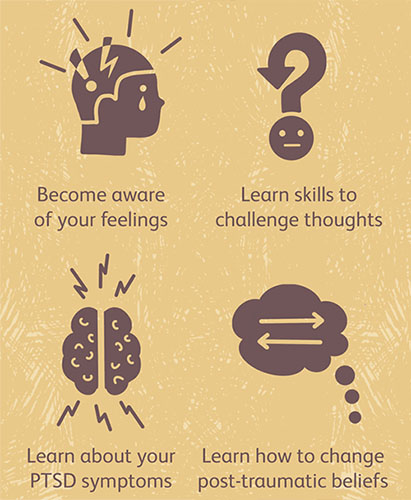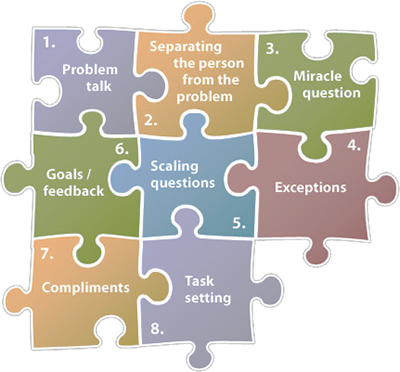 Emotional freedom technique (EFT) tapping is a mind-body method of tapping acupuncture points (acupoints) on the hands, face, and body with your fingertips while focusing on an issue or feeling you’re hoping to resolve. This method may reduce stress and anxiety, improve performance, lessen cravings, and help resolve fears.
Emotional freedom technique (EFT) tapping is a mind-body method of tapping acupuncture points (acupoints) on the hands, face, and body with your fingertips while focusing on an issue or feeling you’re hoping to resolve. This method may reduce stress and anxiety, improve performance, lessen cravings, and help resolve fears.
Tapping, or EFT, is a mind-body therapy that draws on the traditional Chinese medicine practice of acupuncture, and it is used today as a self-help approach in modern psychology. It involves tapping key acupoints while focusing on uncomfortable feelings or concerns, and using positive affirmations to neutralize those feelings.
Research suggests that EFT tapping can relieve stress, diminish cravings, improve performance, and even help relieve symptoms of post-traumatic stress disorder (PTSD).
Standard EFT tapping typically incorporates nine acupoints on the face, hands, and body:
- Eyebrow – where the eyebrows start at the bridge of the nose
- Side of the Eye – on the bone along the outside of either eye
- Under the Eye – on the top of the cheekbone under either eye
- Under the Nose – the area beneath the nose and above the upper lip
- Chin Point – the crease between your bottom lip and chin
- Collarbone Point – about two inches below and to the side of where your collar bones meet
- Under the Arm – on each side, about four inches beneath the armpits
- Top of the Head – directly on the crown of your head
- Karate Chop – the outer edge of the hand, on the opposite side from the thumb
However, EFT tapping involves more than stimulating these acupoints — it also incorporates mental focus.
One of the first steps in tapping is to identify a feeling or situation that’s bothering you and create a statement that acknowledges the feeling or problem, followed by a phrase of acceptance. For example: “Even though I’m overwhelmed with work, I deeply and completely accept myself.”
Over time, clinical tapping sessions teach the brain to respond to stressful memories in a neutral way. After clinical EFT, people retain the details of the traumatic memory minus the emotional response, or they have a lessened experience of the emotional response.
 The term psychotherapy is often interchanged with terms like therapy, counseling, and talk therapy.
The term psychotherapy is often interchanged with terms like therapy, counseling, and talk therapy.

 How many therapists does it take to change a light bulb? Just one, but the light bulb really has to want to change. OK, OK, we have corny jokes! But therapy doesn’t always have to be formal and sterile, sometimes laughing is the best medicine.
How many therapists does it take to change a light bulb? Just one, but the light bulb really has to want to change. OK, OK, we have corny jokes! But therapy doesn’t always have to be formal and sterile, sometimes laughing is the best medicine.



 Cognitive behavioral therapy (CBT) is a form of psychological treatment that has been demonstrated to be effective for a range of problems including depression, anxiety, alcohol and drug use problems, marital problems, eating disorders, trauma, and severe mental illness.
Cognitive behavioral therapy (CBT) is a form of psychological treatment that has been demonstrated to be effective for a range of problems including depression, anxiety, alcohol and drug use problems, marital problems, eating disorders, trauma, and severe mental illness. Cognitive processing therapy (CPT) is a specific type of cognitive behavioral therapy that helps patients learn how to modify and challenge unhelpful beliefs related to the trauma.
Cognitive processing therapy (CPT) is a specific type of cognitive behavioral therapy that helps patients learn how to modify and challenge unhelpful beliefs related to the trauma. Cognitive-behavioral conjoint therapy for PTSD (CBCT for PTSD) is designed to improve post-traumatic stress symptoms and enhance intimate relationships when one or both partners suffer from PTSD.
Cognitive-behavioral conjoint therapy for PTSD (CBCT for PTSD) is designed to improve post-traumatic stress symptoms and enhance intimate relationships when one or both partners suffer from PTSD. Dialectical behavior therapy (DBT) is a type of talk therapy based on cognitive behavioral therapy (CBT). It is specially adapted for people who feel emotions very intensely.
Dialectical behavior therapy (DBT) is a type of talk therapy based on cognitive behavioral therapy (CBT). It is specially adapted for people who feel emotions very intensely. Emotional freedom technique (EFT) tapping is a mind-body method of tapping acupuncture points (acupoints) on the hands, face, and body with your fingertips while focusing on an issue or feeling you’re hoping to resolve. This method may reduce stress and anxiety, improve performance, lessen cravings, and help resolve fears.
Emotional freedom technique (EFT) tapping is a mind-body method of tapping acupuncture points (acupoints) on the hands, face, and body with your fingertips while focusing on an issue or feeling you’re hoping to resolve. This method may reduce stress and anxiety, improve performance, lessen cravings, and help resolve fears. Existential psychotherapy is a style of therapy that places emphasis on the human condition as a whole. Existential psychotherapy uses a positive approach that applauds human capacities and aspirations while simultaneously acknowledging human limitations.
Existential psychotherapy is a style of therapy that places emphasis on the human condition as a whole. Existential psychotherapy uses a positive approach that applauds human capacities and aspirations while simultaneously acknowledging human limitations. Eye Movement Desensitization and Reprocessing (EMDR), as with most therapy approaches, focuses on the individual’s present concerns. The EMDR approach believes past emotionally-charged experiences are overly influencing your present emotions, sensations, and thoughts about yourself. As an example: “Do you ever feel worthless although you know you are a worthwhile person?”
Eye Movement Desensitization and Reprocessing (EMDR), as with most therapy approaches, focuses on the individual’s present concerns. The EMDR approach believes past emotionally-charged experiences are overly influencing your present emotions, sensations, and thoughts about yourself. As an example: “Do you ever feel worthless although you know you are a worthwhile person?” Insight oriented therapy approaches mental health counseling with a specific focus on helping you understand your inner motivations and workings. Your therapist will use insight oriented therapy to encourage you to analyze and further understand how events of your past are negatively influencing your current thoughts, feelings, and unconscious behaviors.
Insight oriented therapy approaches mental health counseling with a specific focus on helping you understand your inner motivations and workings. Your therapist will use insight oriented therapy to encourage you to analyze and further understand how events of your past are negatively influencing your current thoughts, feelings, and unconscious behaviors. Integrative behavioral couple therapy (IBCT) is a relatively new approach to couple therapy. Integrative Behavioral Couple Therapy is “integrative” in at least two senses: First, it integrates the twin goals of acceptance and change as positive outcomes for couples in therapy. Couples who succeed in therapy usually make some concrete changes to accommodate the needs of the other but they also show greater emotional acceptance of the other. Second, IBCT integrates a variety of treatment strategies under a consistent behavioral theoretical framework.
Integrative behavioral couple therapy (IBCT) is a relatively new approach to couple therapy. Integrative Behavioral Couple Therapy is “integrative” in at least two senses: First, it integrates the twin goals of acceptance and change as positive outcomes for couples in therapy. Couples who succeed in therapy usually make some concrete changes to accommodate the needs of the other but they also show greater emotional acceptance of the other. Second, IBCT integrates a variety of treatment strategies under a consistent behavioral theoretical framework. Motivational interviewing is a therapeutic method that helps clients resolve ambivalent feelings and insecurities to find the internal motivation people need to change their behavior. It is a practical, empathetic, and short-term process that takes into consideration how difficult it is to make life changes.
Motivational interviewing is a therapeutic method that helps clients resolve ambivalent feelings and insecurities to find the internal motivation people need to change their behavior. It is a practical, empathetic, and short-term process that takes into consideration how difficult it is to make life changes. Person-centered therapy operates on the humanistic belief that the client is inherently driven toward and has the capacity for growth and self-actualization; it relies on this force for therapeutic change. The role of the therapist is to provide a nonjudgmental environment conducive to honest self-exploration.
Person-centered therapy operates on the humanistic belief that the client is inherently driven toward and has the capacity for growth and self-actualization; it relies on this force for therapeutic change. The role of the therapist is to provide a nonjudgmental environment conducive to honest self-exploration. Play Therapy is an evidence-based practice for working with children in mental health.
Play Therapy is an evidence-based practice for working with children in mental health. Solution-Focused Brief Therapy (SFBT), also called Solution-Focused Therapy (SFT), is a short-term, goal-focused, evidence-based therapeutic approach that incorporates positive psychology principles and practices to help clients change by constructing solutions rather than focusing on problems. In the most basic sense, SFBT is a hope friendly, positive emotion eliciting, future-oriented vehicle for formulating, motivating, achieving, and sustaining desired behavioral change.
Solution-Focused Brief Therapy (SFBT), also called Solution-Focused Therapy (SFT), is a short-term, goal-focused, evidence-based therapeutic approach that incorporates positive psychology principles and practices to help clients change by constructing solutions rather than focusing on problems. In the most basic sense, SFBT is a hope friendly, positive emotion eliciting, future-oriented vehicle for formulating, motivating, achieving, and sustaining desired behavioral change. Trauma-focused cognitive behavioral therapy (TF-CBT) is an evidence-based treatment for children and adolescents impacted by trauma and their parents or caregivers. Research shows that TF-CBT successfully resolves a broad array of emotional and behavioral difficulties associated with single, multiple and complex trauma experiences.
Trauma-focused cognitive behavioral therapy (TF-CBT) is an evidence-based treatment for children and adolescents impacted by trauma and their parents or caregivers. Research shows that TF-CBT successfully resolves a broad array of emotional and behavioral difficulties associated with single, multiple and complex trauma experiences.